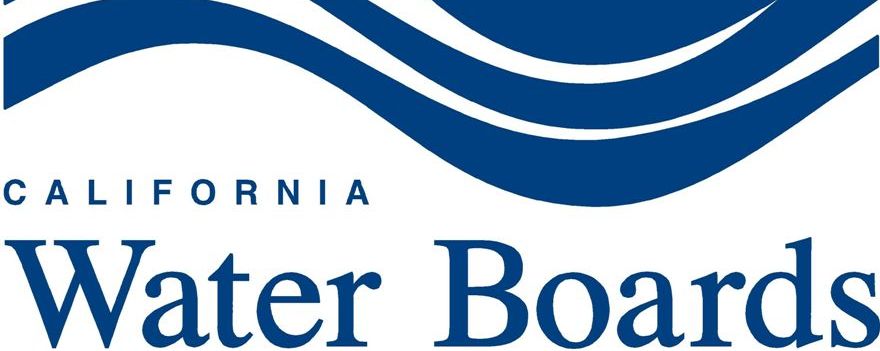From the State Water Resources Control Board:
“With California’s extreme drought resulting in insufficient water to serve all water-right holders, the State Water Resources Control Board (State Water Board) announced today that junior water-right holders in the San Joaquin River watershed and on the Scott River are receiving curtailment notices. The notices advise the recipients to stop diverting water from the watersheds and allow it to flow to more senior water-right holders, as required by state law.
California water rights law is based on seniority. In dry years, when there isn’t enough water in the system to serve all water-right holders, those with more junior water rights may be required to stop diverting water from rivers and streams before restrictions are imposed on more senior water-right holders. Approximately 2,981 junior water-rights in the San Joaquin River watershed held by 1,474 individuals and entities will receive curtailment notices. The Scott River curtailment notice includes 162 water rights held by 137 individuals and entities.
Most of the water rights are for agricultural use. A total of 2,549 (85 percent) of the water rights receiving the curtailment notices in the San Joaquin watershed list agricultural uses as either the only or one of the uses for the water. Agricultural uses — such as irrigation, stockpond or livestock watering — are listed as the sole water use for 1,846 (62 percent) of the water rights. The Scott River curtailment notices include 147 water rights (91 percent) that list agricultural uses.
This marks the second consecutive year that water-right holders on the San Joaquin River watershed, California’s second largest, have been curtailed. Last year curtailment notices were issued on May 30 to 1,634 water-right holders and remained in effect until November. Hundreds of thousands of acres of farmland were fallowed and thousands of farmworkers lost their jobs last year due to the drought.
Water right holders under a curtailment notice can still access water previously stored for them in reservoirs. If that’s not available, they will have to find another source of water, such as groundwater or purchased water, or stop using water. Violations of curtailment notices are subject to fines up to $1,000 per day and $2,500 per acre-foot of water, cease and desist orders or prosecution in court.
The Governor’s Drought Executive Order mandates that the State Water Board adopt and implement emergency regulations that among other things require the curtailment of diversions when water is not available under the diverter’s priority of right.
Under the state’s water-rights system of “first in time, first in right,” junior water-right holders are those with permits, licenses, registrations and certificates issued after 1914 by the State Water Board and its predecessors, also referred to as “post-1914 appropriative rights.”
This curtailment affects water-right holders in the San Joaquin River watershed, which covers almost 16,000 square miles and includes the Stanislaus River, Tuolumne River, Merced River, and all other portions and tributaries of the San Joaquin River. A copy of the letter can be found here.
The State Water Board is encouraging diverters to work together to reach local voluntary agreements that not only provide solutions that help local communities with water shortages, but also prevent impacts to other legal users of water and do not cause unreasonable effects on fish and wildlife.
The Board’s action is based on the most recent reservoir storage levels and inflow projections, along with forecasts for future precipitation. Conditions in this and other watersheds continue to be monitored and curtailment notices for other watersheds and for senior water right holders in the San Joaquin River may be imminent. The State Water Board has issued two letters this year warning water right holders that their rights may be curtailed due to the drought.
Last year, the State Water Board issued curtailment notices to about 9,000 diverters on five watersheds statewide.
The State Water Board maintains a web page to assist water right holders in several important watersheds to plan for possible limits on water supply availability. The web page, titled “Watershed Analysis,” details projected water supply, demand and availability for the watersheds most likely to face restrictions during the drought as demand outstrips available water supply.
A Curtailment Fact Sheet provides additional details on the curtailment process. Please visit our curtailment notification website to see what watersheds have received curtailment letters.
Information on the drought is available at the State Water Board’s drought web site.
For more than two years, California has been dealing with the effects of drought. To learn about all the actions the state has taken to manage our water system and cope with the impacts of the drought, visit Drought.CA.Gov.
Every Californian should take steps to conserve water. Find out how at SaveOurWater.com.
——————————————–
Get the Notebook blog by email and you’ll always be one of the first to know!
- Sign up for daily emails and get all the Notebook’s aggregated and original water news content delivered to your email box by 9AM. Breaking news alerts like this one, too. Sign me up!
 Maven’s Notebook
Maven’s Notebook
constantly watching over the world of California water


